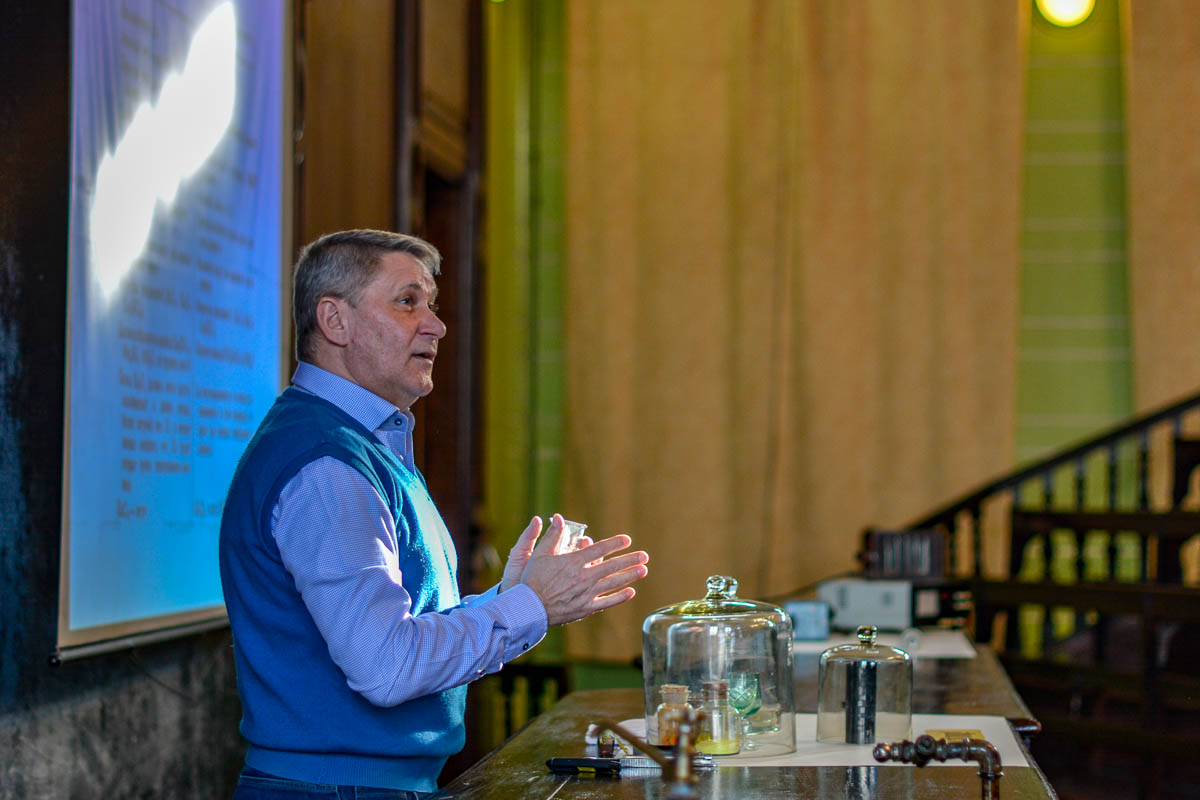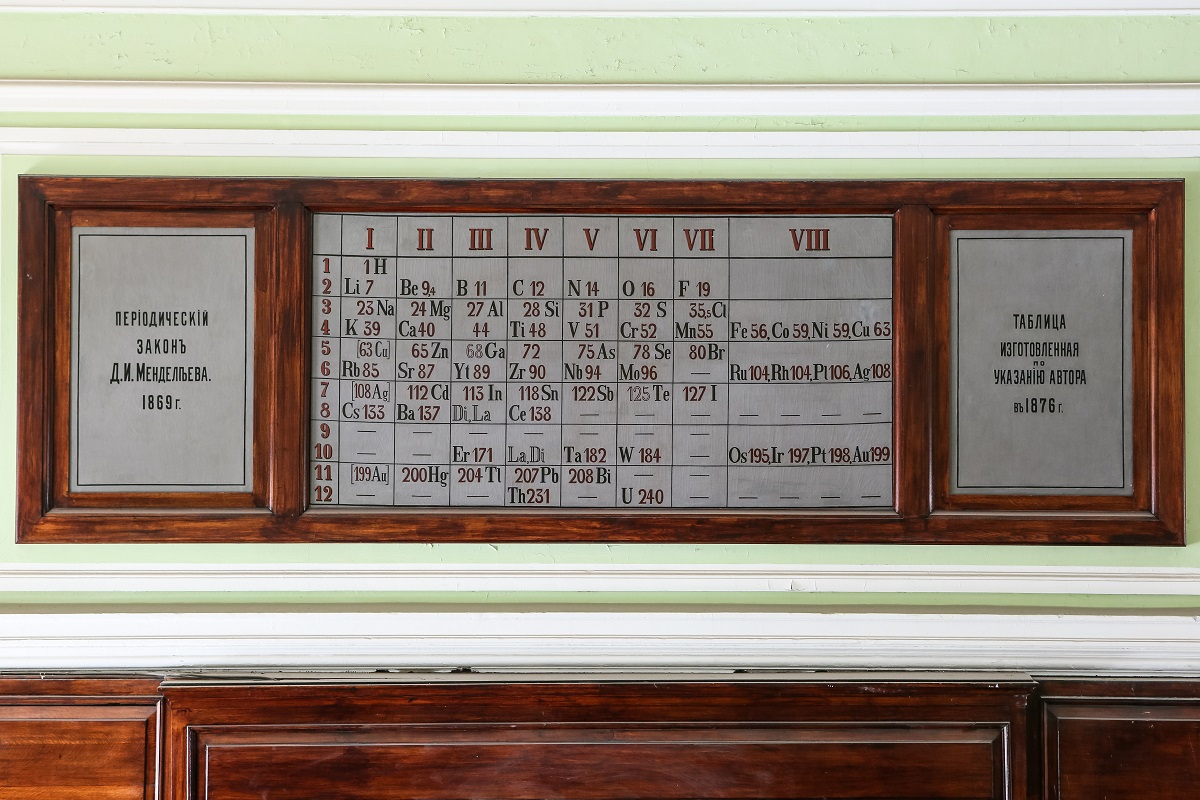Where should we look for the oldest Mendeleev’s Periodic Table?
The first public demonstration version of the Periodic System is kept at St Petersburg University - in one of the buildings of the Vasileostrovsky campus, but not in Scotland, as many media have recently written.
This statement was made by Evgeny Kalinin, Assistant Professor in the St Petersburg University Department of Radiochemistry, during his public lecture “The 150th Anniversary of Mendeleev’s Periodic Table: The Story Behind the Invention” for schoolchildren. “This demonstration version was made on personal instructions of Dmitri Mendeleev in 1876. Recently, the media wrote about a Periodic Table found at the University of St Andrews, which is allegedly the oldest one in the world. This is not the case,” says Evgeny Kalinin. “The experts found out that the wall table found in Scotland was printed in the 1880s. Although this find is obviously interesting, a truly valuable demonstration version of the Periodic Table is stored at St Petersburg University, in the Big Chemical Auditorium.”
Evgeny Kalinin drew the attention of schoolchildren to the difference in dates between the formulation of the Periodic Law in 1869 and the creation of its graphic image as a table in 1876. What happened during these seven years? Why was the first public version of the table not created earlier?
When Dmitri Mendeleev formulated the Periodic System, he did not feel certain about its final form. It took him several years to think this question through.
Evgeny Kalinin, Assistant Professor, St Petersburg University
The version presented to the audience in St Petersburg University does not match the one which we are familiar with. According to the chemist, this table is missing, for example, the eighth (VIII) group of chemical elements, noble gases. “By the time this version was created, they had not been open yet, and, frankly, neither Mendeleev himself nor his contemporaries are sure not to have even assumed the existence of noble gases in nature. Therefore, there is no room for them in this version,” explains Evgeny Kalinin.
This table is also missing some chemical elements. It has dashes at their places. These elements had not been open yet, but Dmitri Mendeleev was convinced that they exist. “The fact that in some cells there is no symbol of chemical elements, but only atomic weight is indicated, proves that. For example, there is a dash and number 44 next to Ca. There is no chemical element, but it is clearly indicated what mass it should have,” explains Evgeny Kalinin.
D.Mendeleev not only compartmentalised chemical elements depending on their atomic weight and chemical properties, but also predicted that it was necessary to work not only with elements known at that time, but also to search for new ones.
Evgeny Kalinin, Assistant Professor, St Petersburg University
The lecture was held in the auditorium called the Big Chemical Auditorium. It is in a building built in 1894 on the initiative of Dmitri Mendeleev. According to Evgeny Kalinin, nearly 400 people studied chemistry at the University every year at the end of the 19th century. But there were no large classrooms or laboratories. Therefore, in the 1880s, Dmitri Mendeleev initiated the building of a special laboratory building for teaching chemistry at the University. Mendeleev himself did not deliver any lectures in it, but he chaired the meetings of the Russian Physical and Chemical Society.
The public lecture for schoolchildren was held as part of a series of events dedicated to the 150th anniversary of the discovery of the Periodic Law and the 185th anniversary of Dmitri Mendeleev's birth. It was attended by schoolchildren of the Volkhovskaya secondary school No 1 and Lyceum No 554 of the Primorsky District, St Petersburg.




